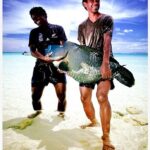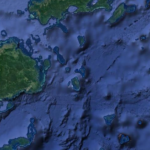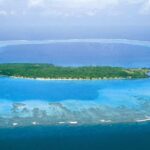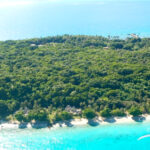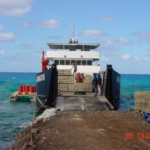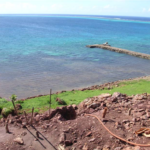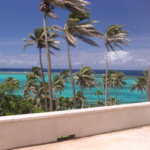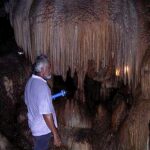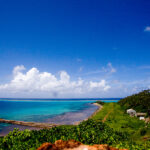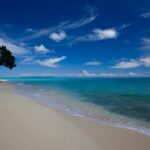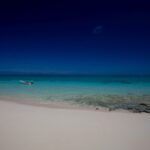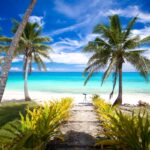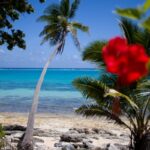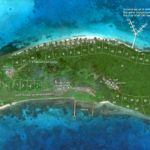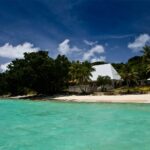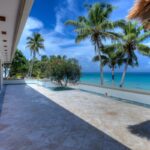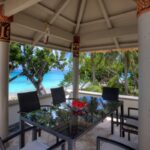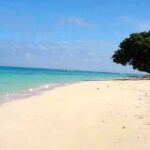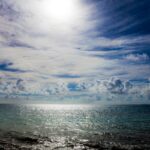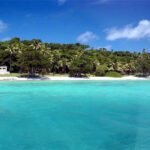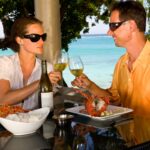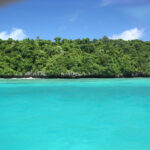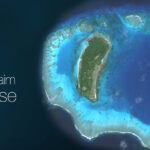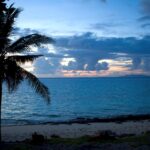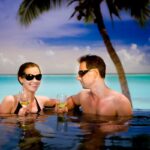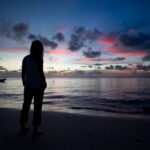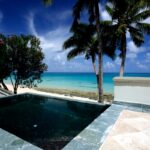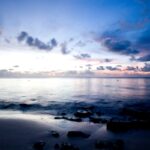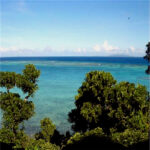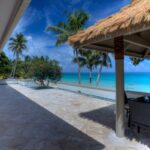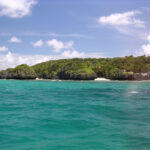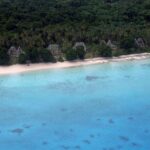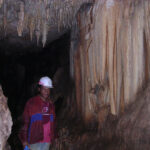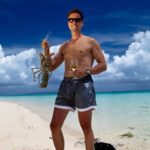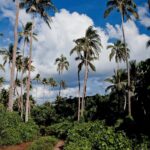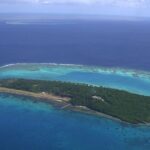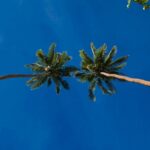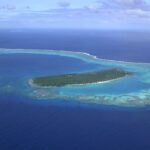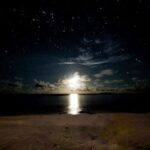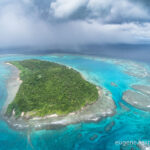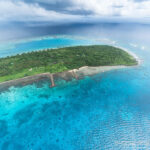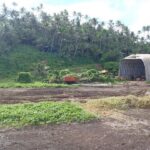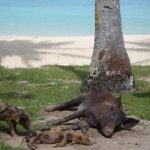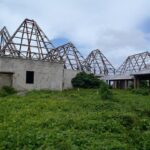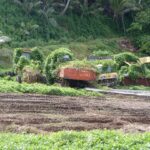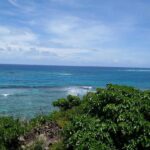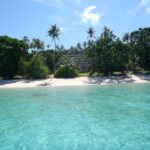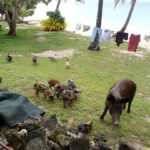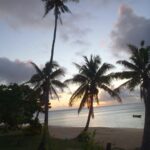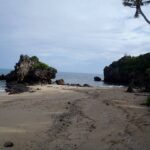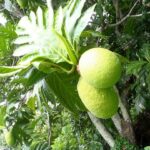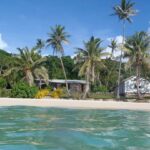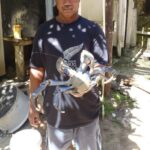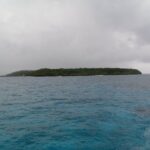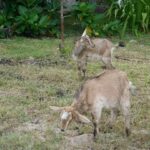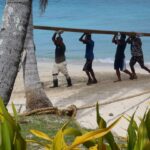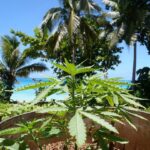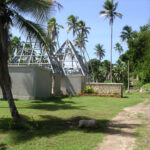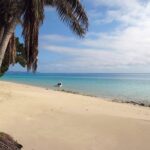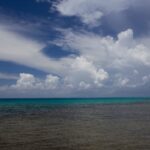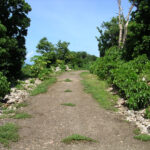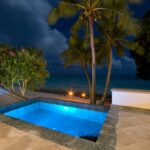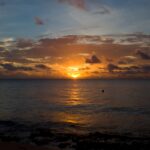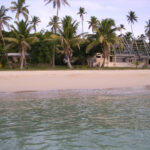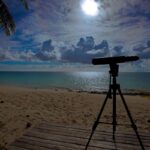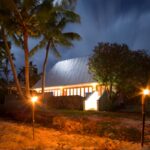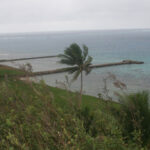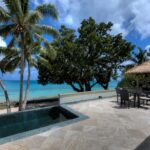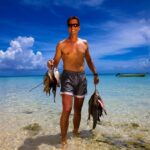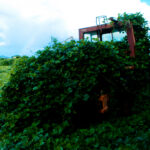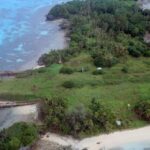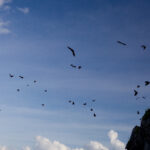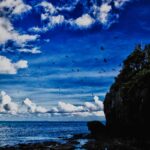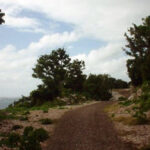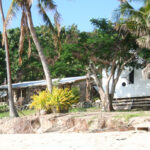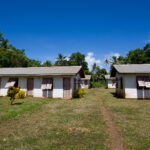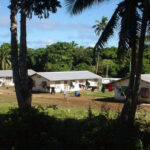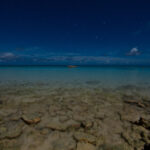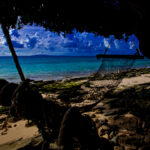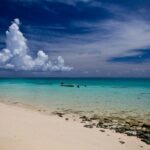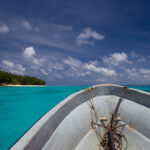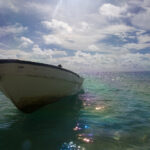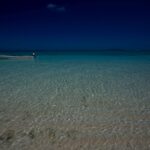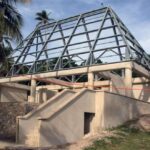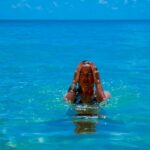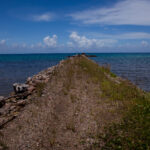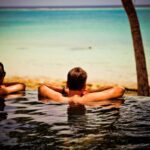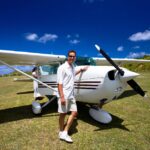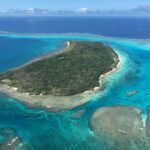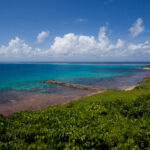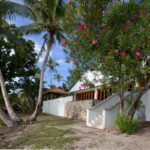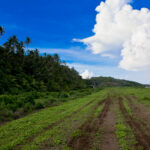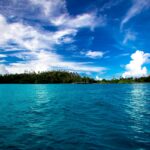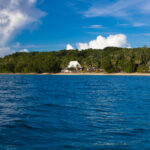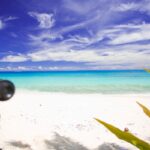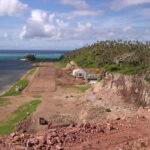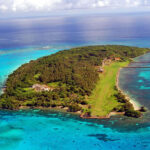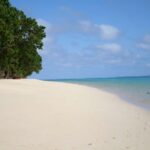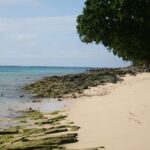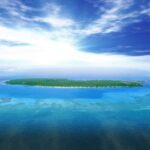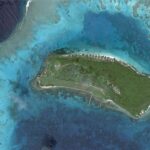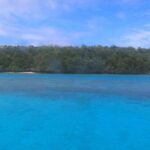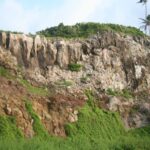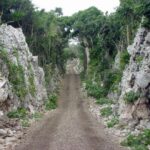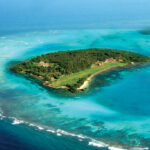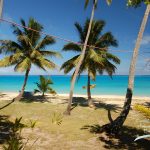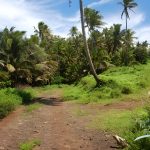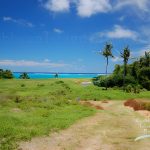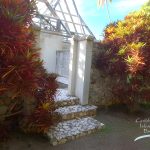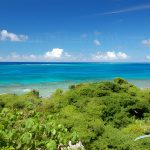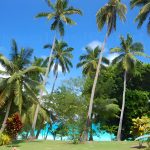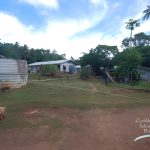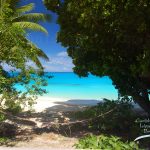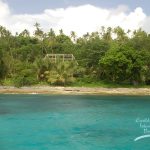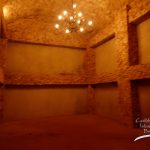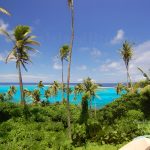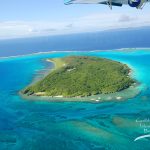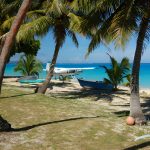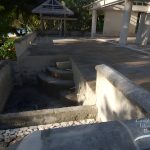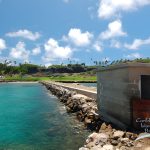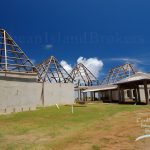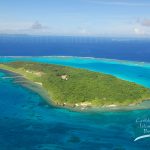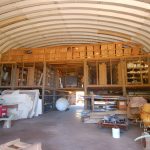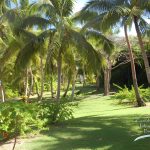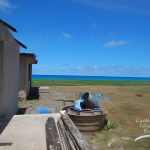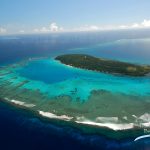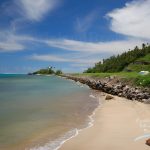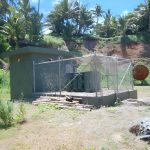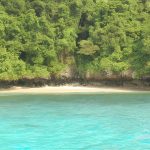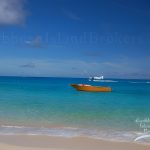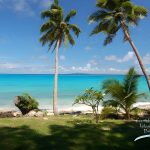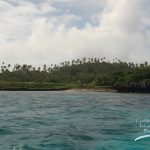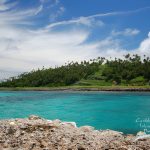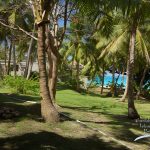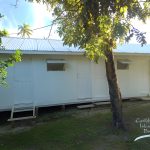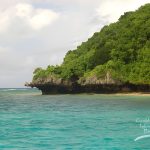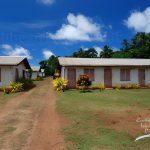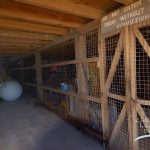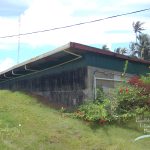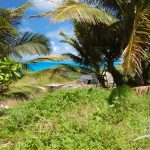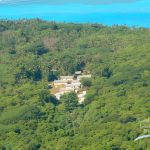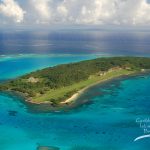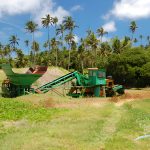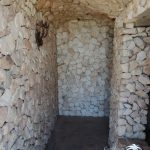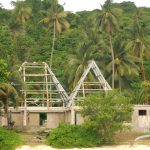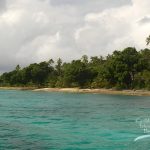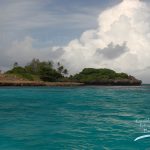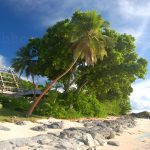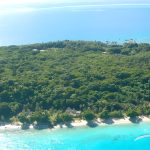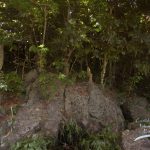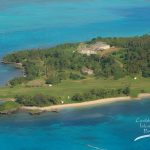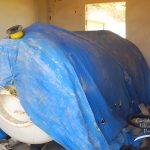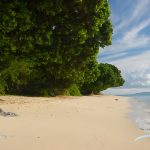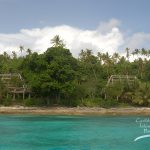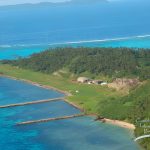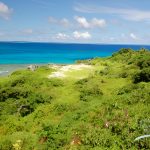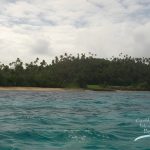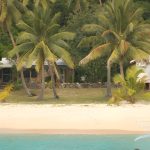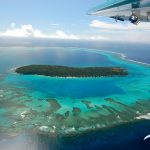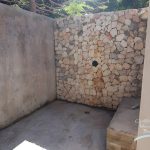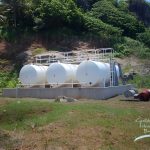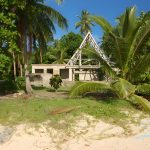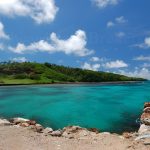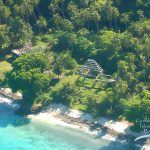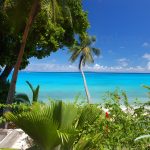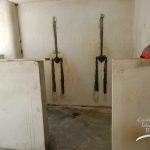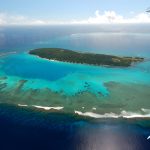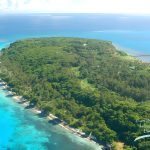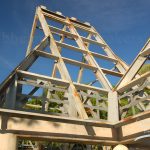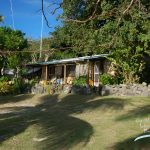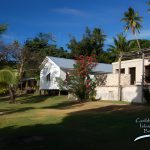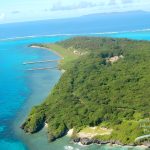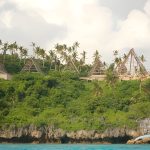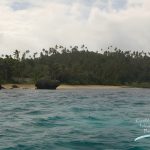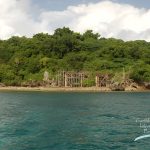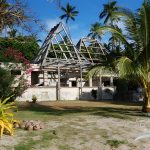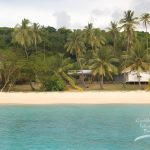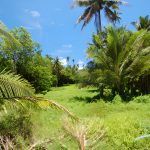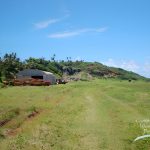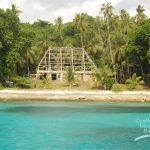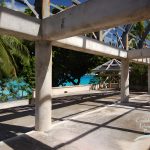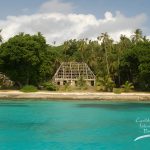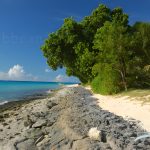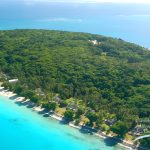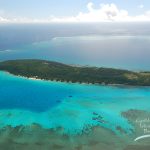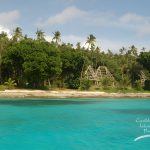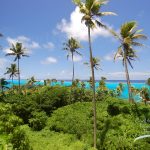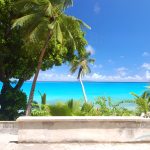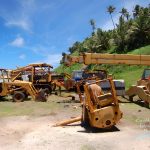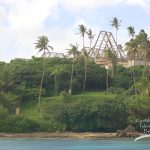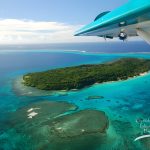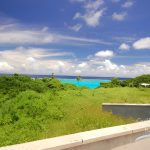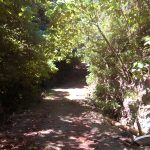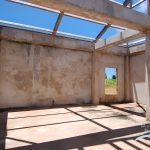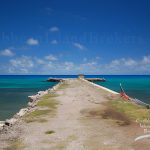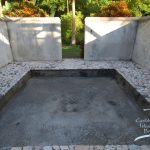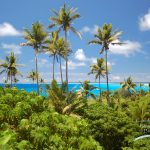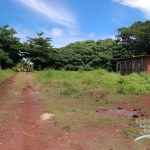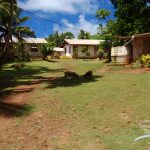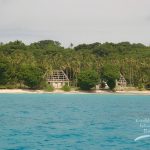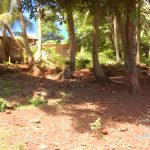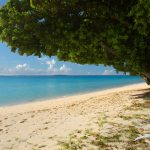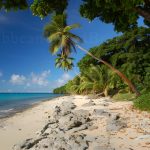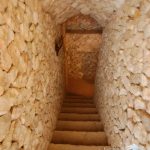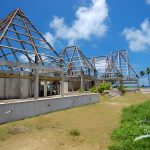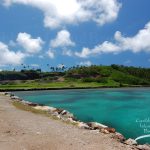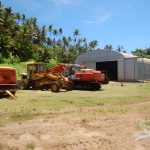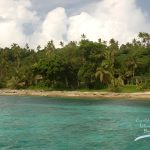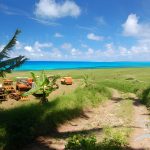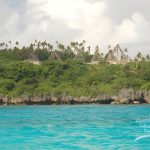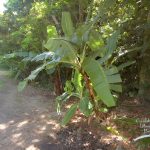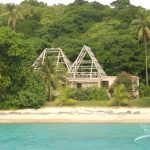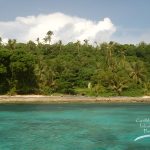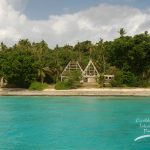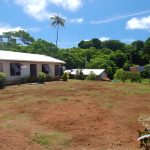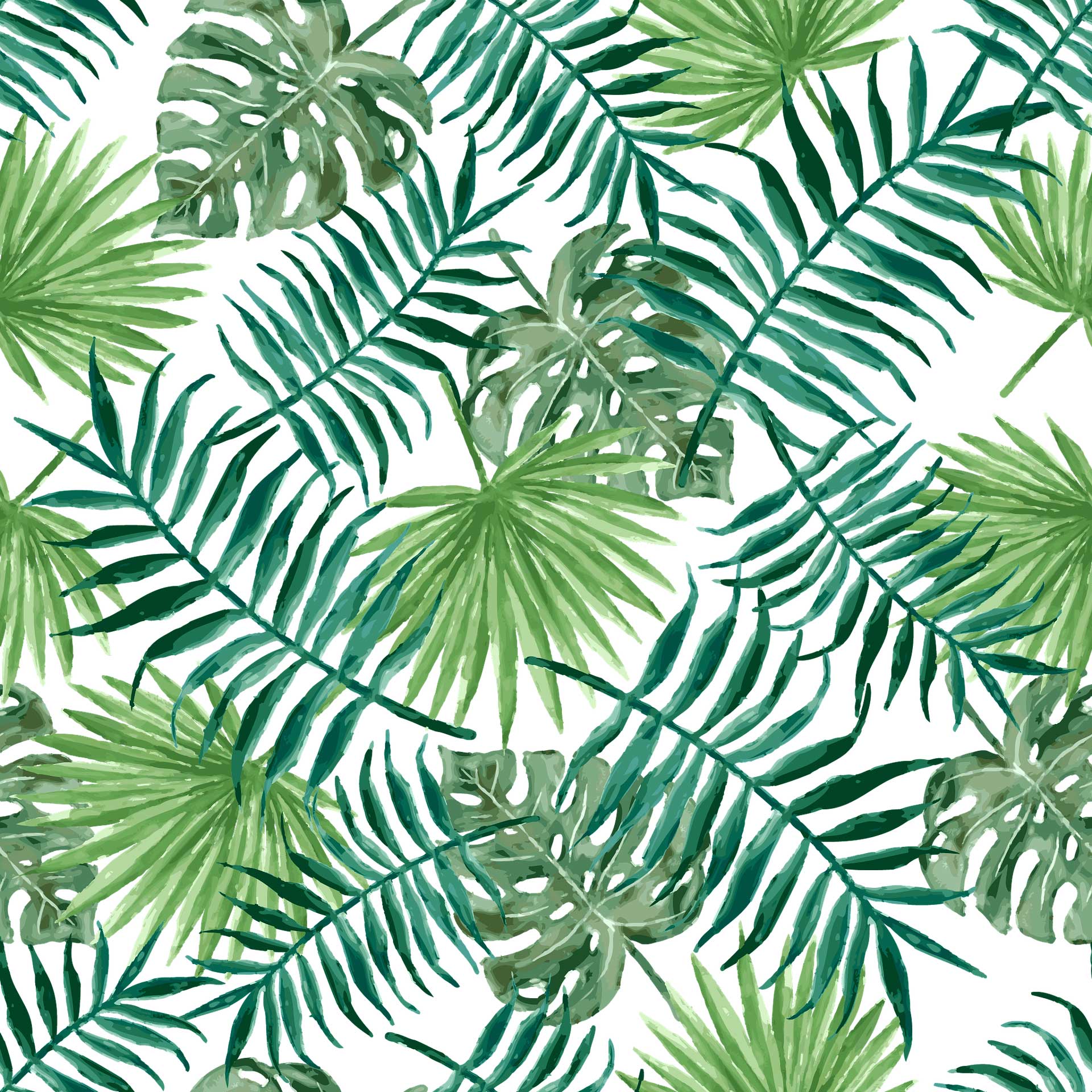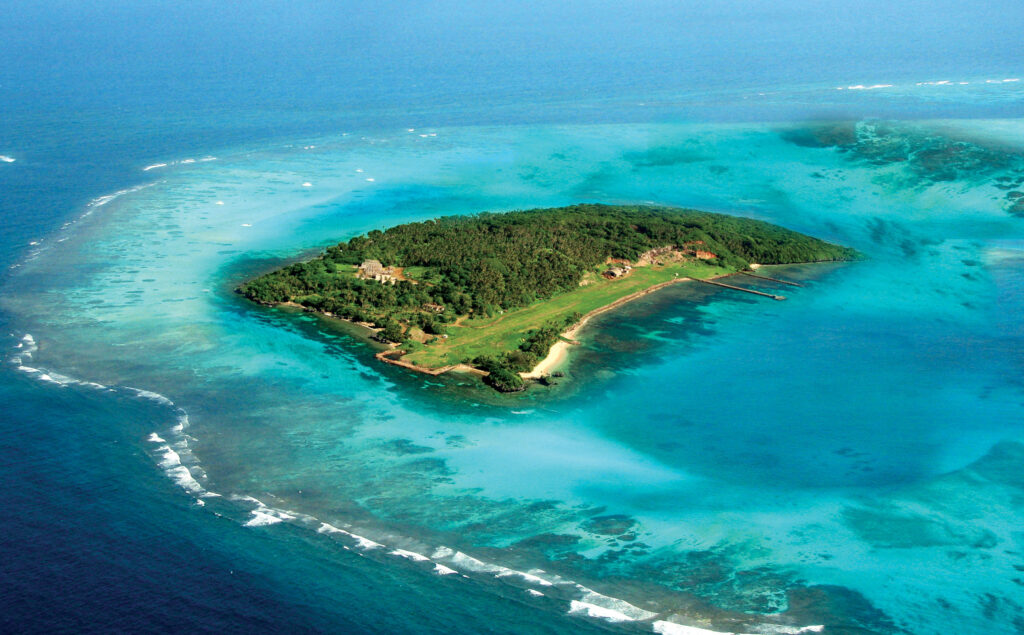
Katafanga Island is an island southeast about 30km from Vanu Balavu, 44 km east of Mago Island. Its area is 225 acres (91ha), length / width about 1.5km by 500m. It has a slight elevation of up to 45m. Katafanga Island is specific in that it lies on a 5,000-acre lagoon (2023ha), a former volcanic crater (so reminiscent of an atoll), which is almost intact and isolated from other islands (the easternmost part of Fiji), so there is no pollution and disturbance of the aquatic world. The island is at the same time both volcanic and coral origin. There is a lot of coral and water.
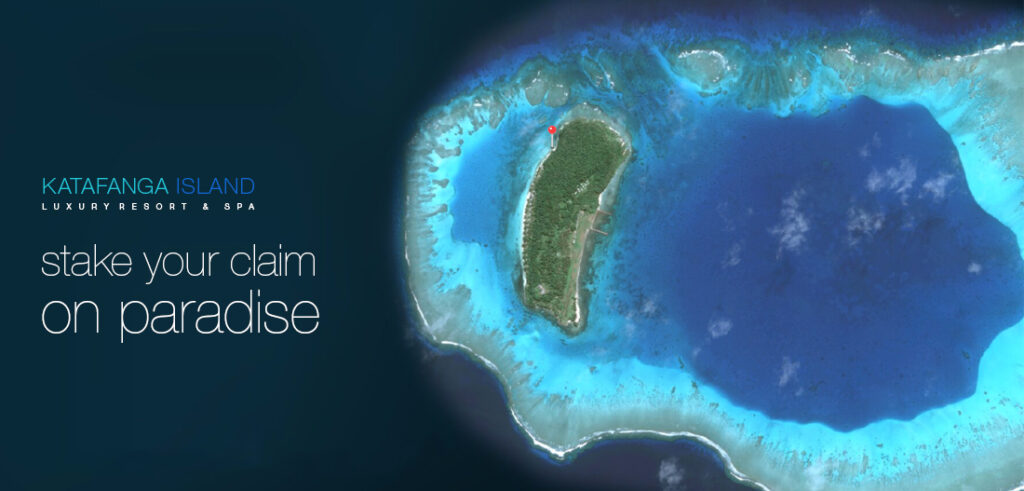
Otherwise, the lagoon is known for being bioluminescent, it glows in the dark when the water is disturbed at night. Dinoflagellate plankton – microscopic creatures responsible for the appearance of bioluminescence – also grow and multiply in a sheltered lagoon, making the waters a magical place for swimming or boating at night. That is why the island is often called the island of the blue lagoon. That is why they say that diving there is exceptional, and visibility in clear water is great.
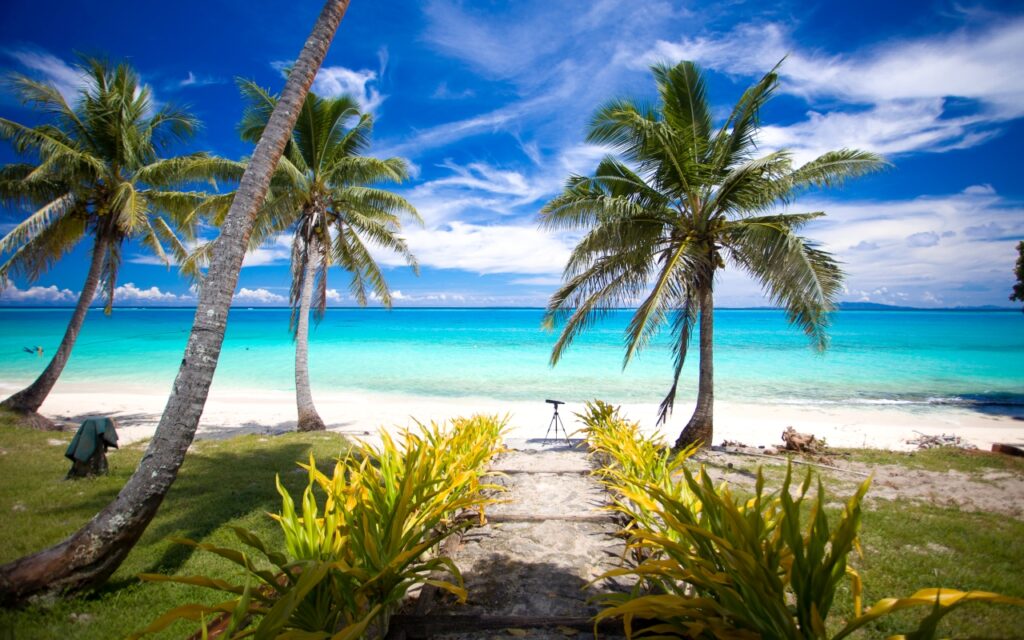
The island is incredibly quiet, beautiful, it used to be a coconut plantation, so there are a lot of coconut palms. The island has excellent flashy white beaches, flashy blue water, coral heads near the beach that in the water personal to blue dots. The island even has a cave that has been explored up to 180m. The island has a runway, a dock for ships, buildings for workers and one luxury villa, which was supposed to mean what a luxury resort would look like. The island has about 6km of roads, there are animals such as pigs, goats, chickens. From the vegetation there are also bananas, breadfruit. Coconut crabs also live on the island.
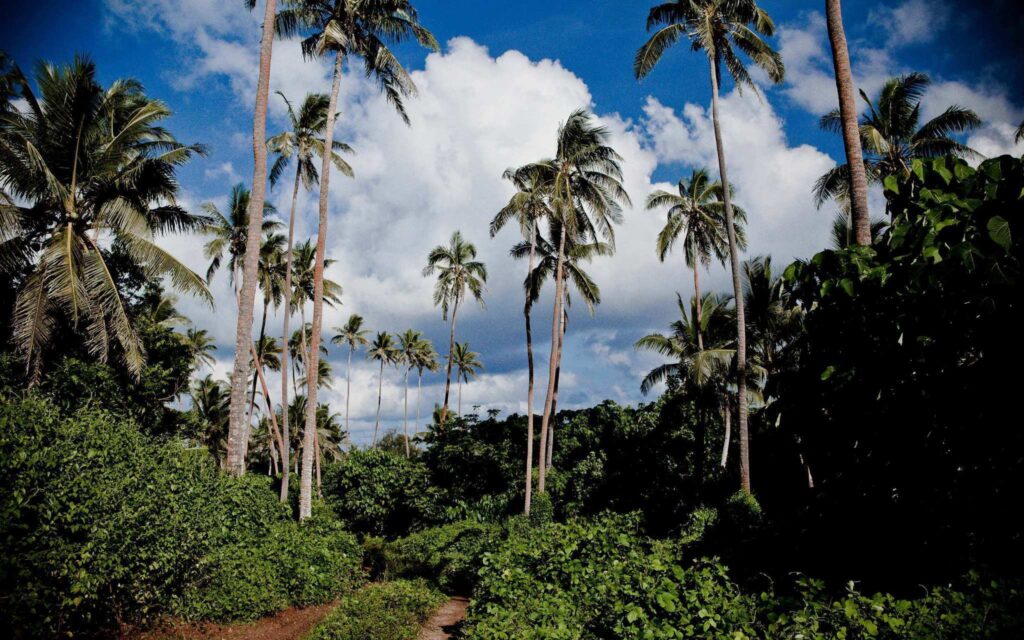
There was an environmental protection program on the island in order to preserve nature. In addition to the existing infrastructure and natural wonders, Katafanga Island is planned to be 100% self-sustainable. Since there is a lot of coconut, the fuel on Katafangi should be based on coconut. This allows the resort to use unlimited biodiesel from completely renewable sources. Using a mixture of 20% diesel and 80% hydrogenated coconut oil is a simple process to convert cars and generators into fuel. In addition, the good location of the island, in the middle of trade winds, allowed the developers to place a large wind turbine on the highest point of the island. Next on the list is a plan for installing a solar roof. The combination of these three energy sources will allow Katafanga to be completely independent and practically 100% carbon-free.
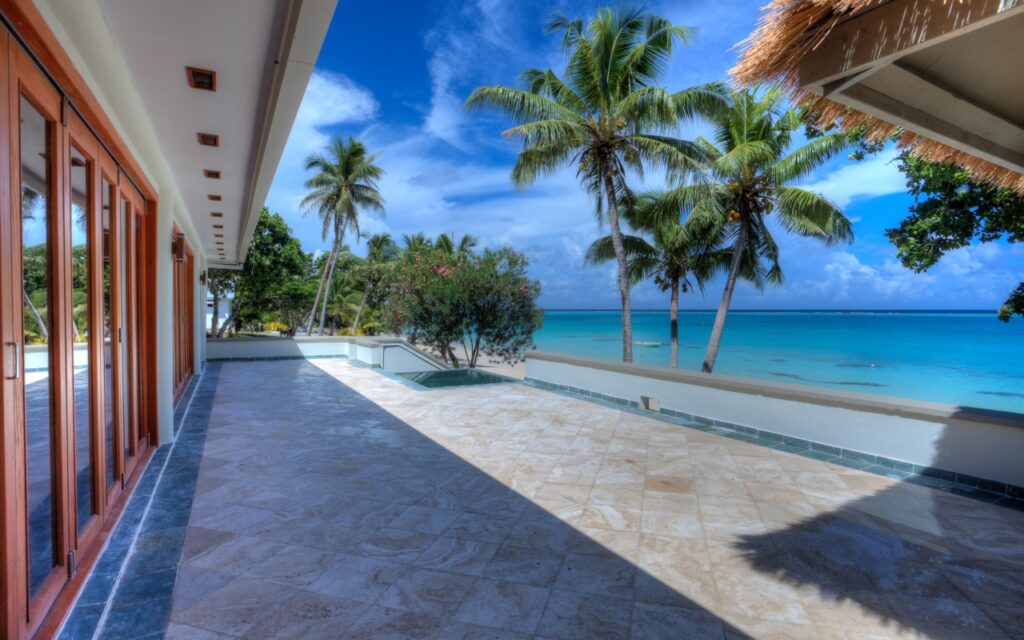
But an island like this is not without its problems either. Construction began on the island, and for some reason (fight for rank, power, influence, fight for the island) they ended up in court, and many things were stopped. Of the 20 planned villas, only one was completed, in 2011, in the hope that someone would see what it looked like and buy the island (that villa is fantastic to be fair). The skeletons of buildings in tropical weather conditions remained.

In 1996, John and Shelley Miller bought the island, and began construction. Christian Jagodzinski acquired a 50% ownership stake. The invested money was used for the development of the island. They brought him in 2000 as an investor. In 2005, the project went beyond the budget, and Christian Jagodzinski still invested money and became the majority owner. Then problems, quarrels started and the case ended up in court for years. In 2009, the court granted Jagodzinski ownership of the project, and then he restarted the project at his discretion.
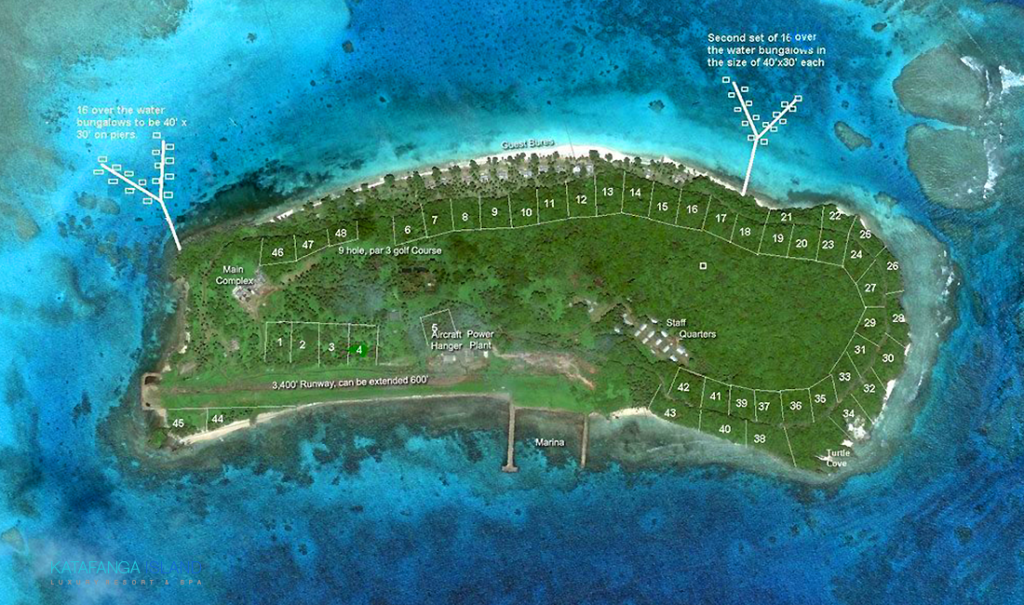

Also, if you look at the two pictures, you will see the machinery on the left, and the same machinery on the right, just overgrown with vegetation! Someone left it outside for years instead of simply bringing it inside. And over the years, it all grew, the weeds destroyed both the machinery and the hanger, which was also not closed. The left picture is from 2008 when the island was put up for sale, and the right is from 2011. Metal rusts outside, tires, residual oil / fuel …
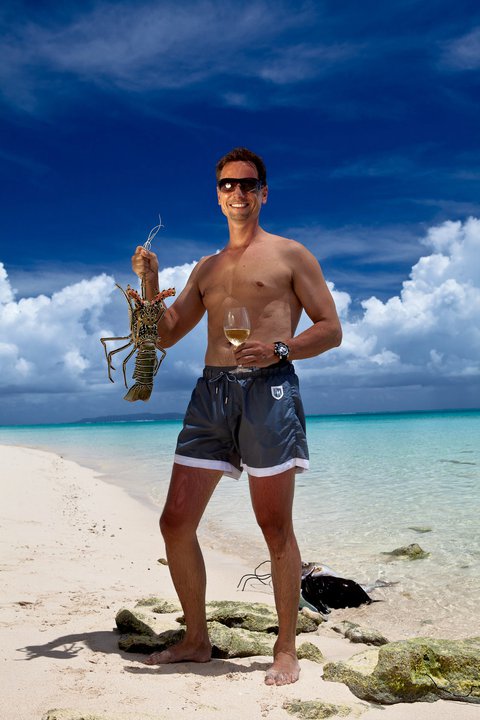

Harold Gatty, an Australian navigator and aviation pioneer, who set the record for aerial circumnavigation of the world back in 1931, also served in airforce during WWII. After the war was over, he settled in Fiji. There, he had an island and found Fiji Airways (later known as Air Pacific). But, first name of the company was Katafaga Estates back in 1947! Yes, it was on this island. And later, the first commercial flight as Fiji Airways was made in 1951, and name got renamed! This island has a nice history!
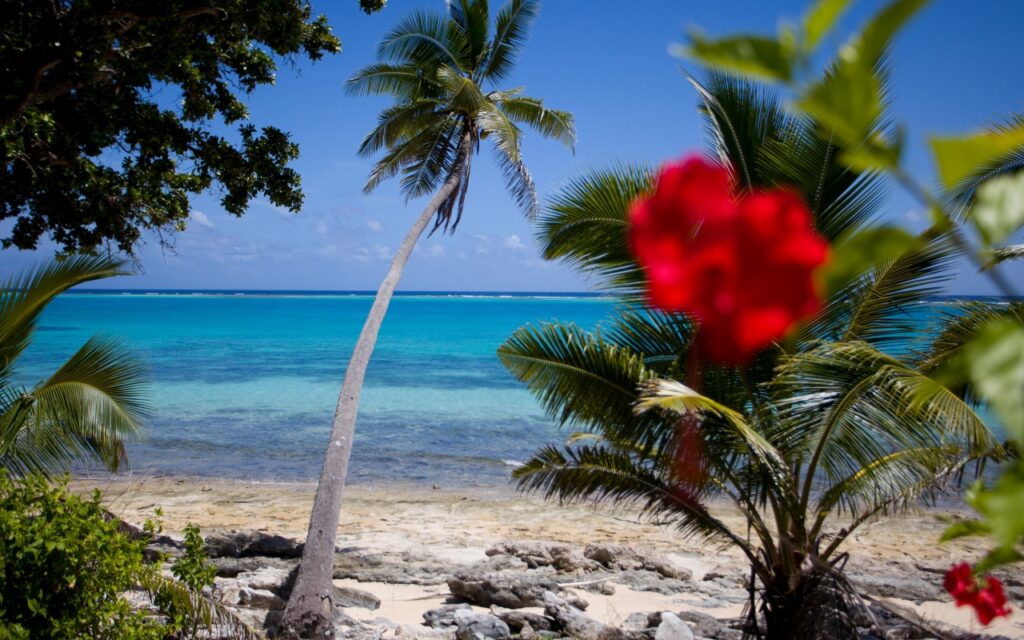
Katafanga is a Tongan word that means smiling beach. Katafanga Island has been on sale for a very long time. For some unknown reason to me, it is not sold yet, despite being the truly rare gem of the Fiji and Pacific Islands. It has been on market for over 10 years I think (since 2008 as far I remember). In various places which sell this island you can still see ,,A timeless and rare opportunity to own one of the last freehold islands in the South Pacific paradise of Fiji. Katafanga Island, also known as the Blue Lagoon, is strategically encircled by a natural 5,000 acre turquoise blue lagoon, and breathtaking sugar white beaches.” well, they are right!
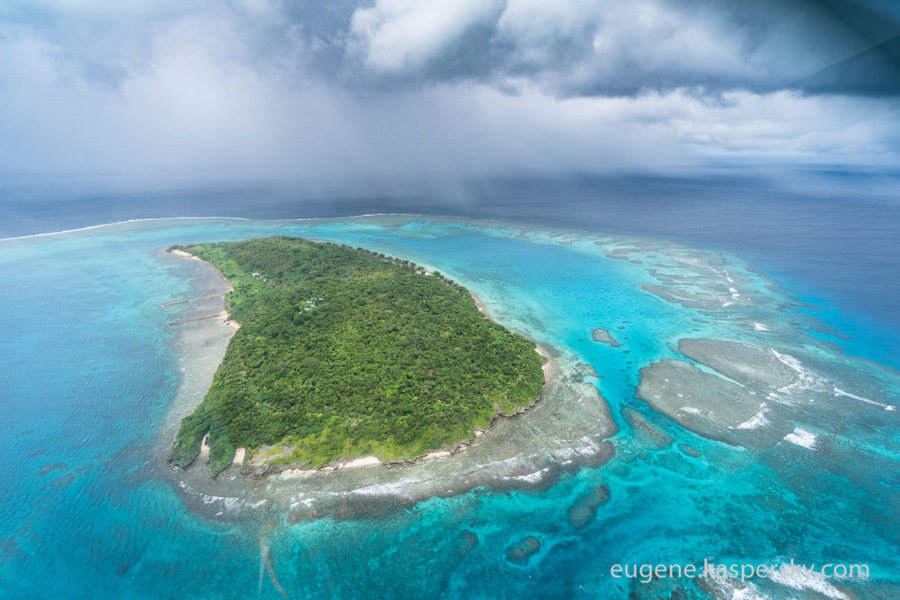
Here, we provide you with a few old PDF ,,Katafanga Island Resort & SPA” ,,Valuation: Katavaga Island Resort, Northern Lau, Fiji Islands” and ,,Katafanga Presentation”, old but useful stuff, a blast from the past, from their sites. There you can find very useful information, proving that this was once a very big project.
FijiKatafangaIslandPresentation
And here is a quote from that valuation of Katafanga:
The island of Katevaga offers a very unique tourism environment for high end adventure seekers. It will appeal to those who have the time and resources to lose themselves in their favorite pastimes and not be bothered by crowds and time schedules. Time to take advantage of the luxurious spa and main complex, the 800 square foot wine cellar’s impressive two story dining room, the 1200 square foot main air conditioned dining room, the outdoor lounge ovetiooking the lagoon, the many sports offered including golf, scuba diving, deep sea fishing, kayaking, sailing, snorkeling, tennis, or just relaxing on the beaches or on a villa’s veranda in a hammock.
Katavaga Is more than out a ‘sun, sand and sea’ tour. destination. There are sandy beaches on the Western side of the island where the main resort villas are located, beautifully protected private coves on the Northern and Southern ends of the island, the Eastern side is utilized by the 1000 metre runway with a rock sea wall three quarters the length of the island with the Northern end enclosed by two rock jetties for a small boat marina with fueling fadlities located on the end of the Southern jetty. The huge lagoon with its large entrance would available to the mega yacht crowd transiting the Pacific; the availability of the Katavaga Island airport allows Customs and Immigration to utilize it for clearance to and from the country for well to do individuals who seek prtvacy. The 225 acre coral island is sloped up to 55 meters in the center, covered by an interesting array of flowering bushes and topical forestation in areas not yet developed. The general picture of the flora and fauna renders a wide range of mostly tropical plants, trees, and plants native only to this area. The island is secluded but not isolated, surrounded to the East by Lakeba Island and outer reefs, to the South by Tuvuca and Aroua islands, to the West by Mago, Vanua Balavu, Munia, and Cikobia islands on the horizon and to the North the outer reefs of Malevuvu, all fringed with coral reefs teeming with tropical fish, live corals, lobsters and large sport fish. All the outer islands are easy to get to by small boat from the island for a 20 to 30 mile trip. The inner reefs are easily accessed by swimming, kayaking, or small boat.

POST UPDATE 4-MARCH-2024
Katafanga Island Resort planned to have underwater hotel-like suite back then, to be the first one in Fiji. I found a facebook post (Nexttriptourism, 10. June 2020), and here is a quote of that statement:
Poseidon Undersea Resorts was a underwater five-star resorts that was first slated to open by September 2008. The first was to be located on a private island in Fiji. The project was to be the world’s first permanent one-atmosphere seafloor structure.The proposed location was Katafanga Island in Fiji. With a design concept in mind, Jones needed to find an appropriate location. To help find it, Jones offered a $10,000 reward for anybody that came up with the perfect location for the venture. After taking the suggestion of a business associate, who recommended a reef off Eleuthera, an island in the Bahamas, negotiations began with the island’s American owners. The negotiations did not go well, and after a year of failed back-and-forth offers the location was scrapped and sights were set off Fiji.
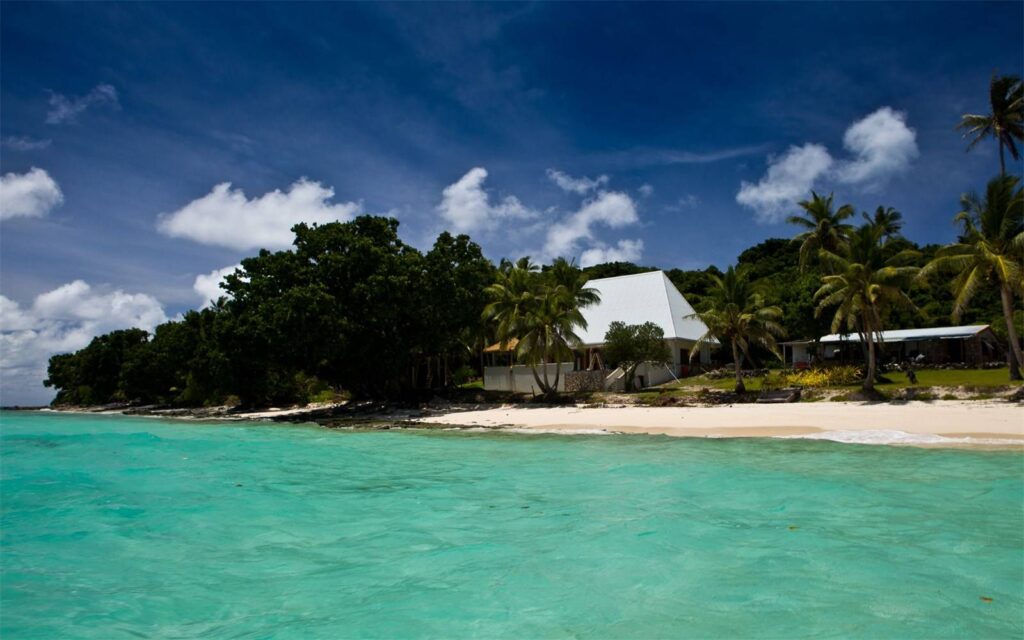
Here are some quote, plans of their older posts from 2012 (Katafanga Island Fiji), to see how their planning was operational (as a glimpse from the past):
There are currently 14 beachfront villas being constructed on the island – with the firstone having been completed in March of 2011. Each villa is air conditioned, has a lavishspa bath, oversized double sinks recessed in granite counters and a dual indoor shower.The exterior of the villa consists of an enclosed courtyard entry with a bridge over apond, a rock walled outdoor shower and individual infinity splash pool located on the2,000 square foot travertine and slate terrace overlooking the ocean. The expansivebifolding mahogany and impact glass doors allow an unobstructed view of the azurelagoon only steps away.The resort has a private marina which has already been completed and has moorings forvisiting yachts. The resort will have a fully functioning dive center and the island alreadyhas the only decompression chamber in all of Fiji. Other activities to be offered includeworld class sport fishing, windsurfing, kite boarding and kayaking.Spa services will also be offered to all guests at Le Spa located in the huge mastercomplex which is partially completed. The spa will offer a range of treatments with aunique South Pacific Flavor. who can choose a serene treatment room or an outdoortropical sanctuary.
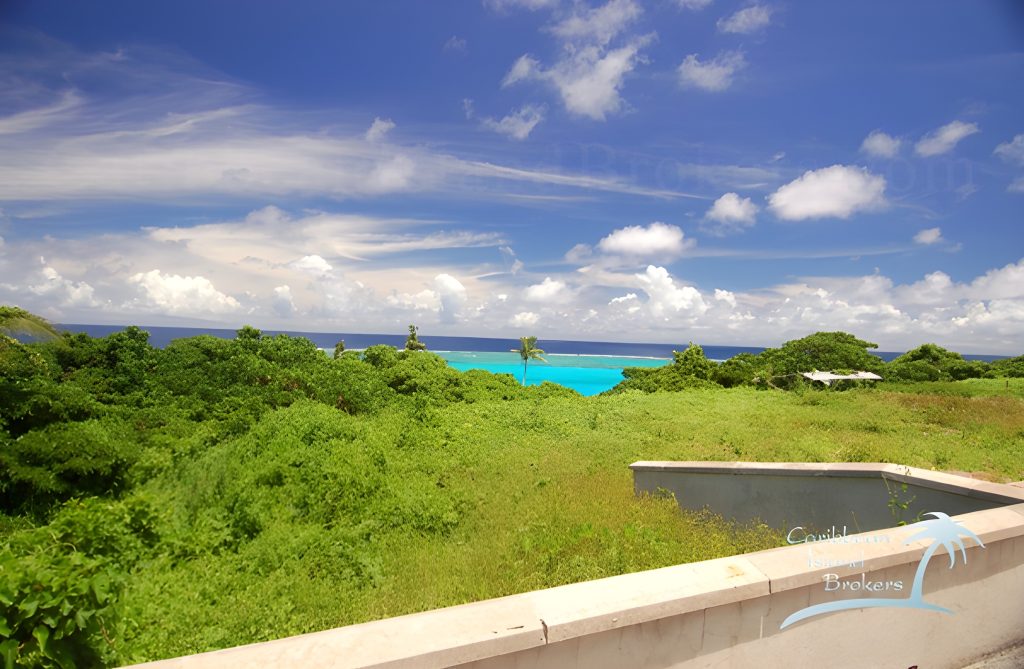
Katafanga has some old videos (since 2008, a glimpse from the past), so you can check, then you will get the link to our large Katafanga Island Gallery album. But, in this exceptional case, you will get two large galleries with over 100 pictures each! Overall it would be over 200 pictures, 220 precisely! But first, video:
That is it. I hope you liked this post. Now time for our large galleries.
HERE IS THE SECOND KATAFANGA ISLAND GALLERY. THOSE IMAGES ARE AI RESIZED FROM THE OLD CARIBBEAN ISLAND BROKERS’ NONFUNCTIONAL SITE. Original images were in low resolution, from 2008, and now they are a few times bigger, like taken recently.

